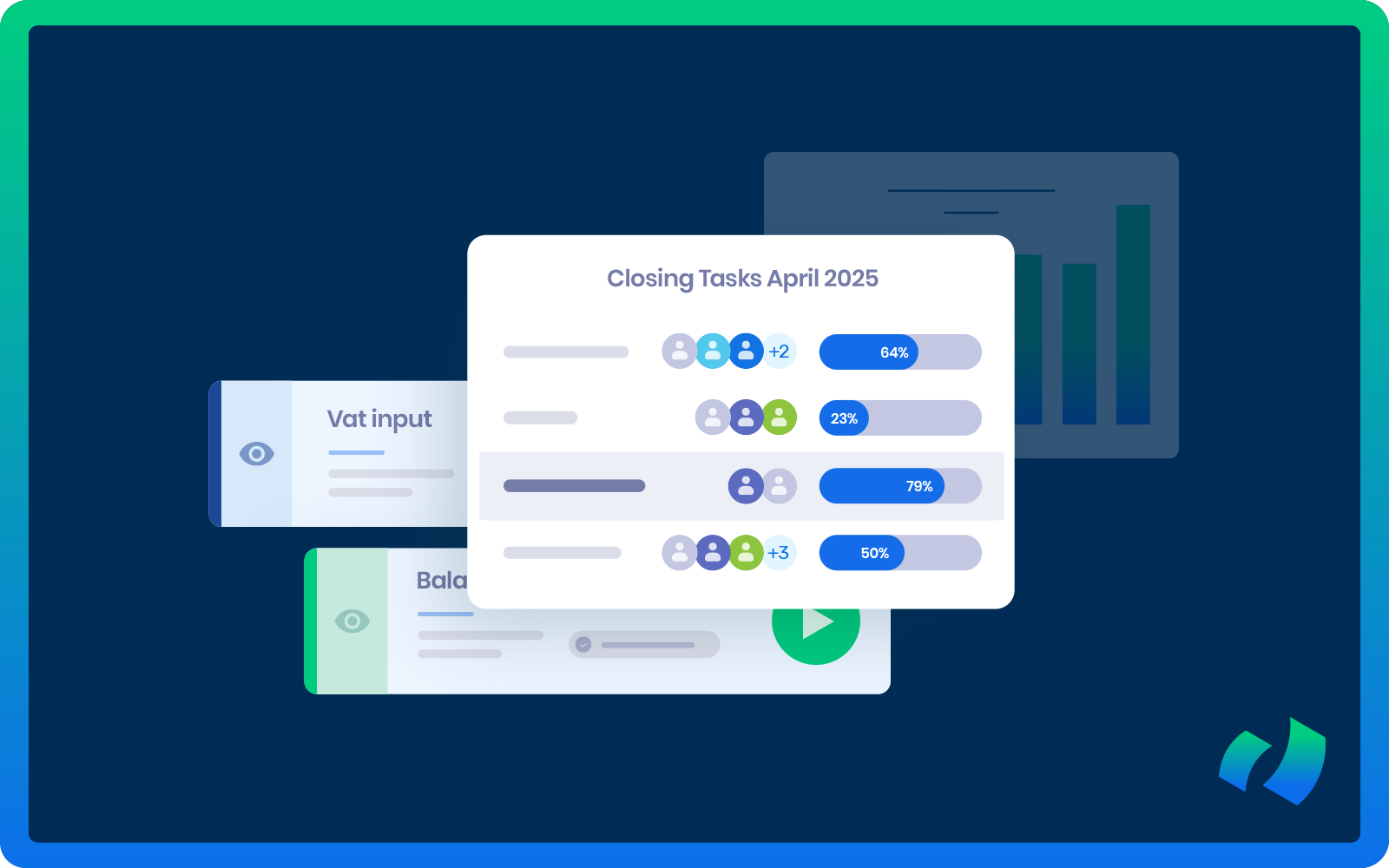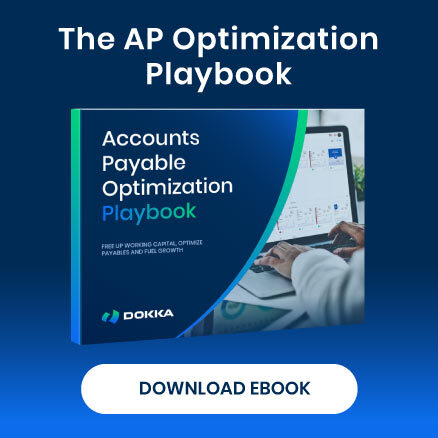In the world of accounting and finance, the pressure to deliver accurate, timely, and compliant financial statements is constant.
Central to that effort is the financial close — a resource-intensive process where accounting teams finalize financial activity for a given period, reconcile accounts, and prepare reports that inform strategic decisions and ensure regulatory compliance.
Despite its critical role, the financial close often suffers from manual workflows, fragmented communication, and siloed data. A highly effective way to overcome these challenges is through robust task management — a structured approach to coordinating the people, processes, and tools involved in closing the books.
In today’s post, we’ll explore the core elements of financial close task management, why it’s essential, how to implement it effectively, and how platforms like DOKKA are reshaping the process.
Why the Financial Close Process Breaks Down
The financial close isn’t a single task — it’s a symphony of interrelated activities. Teams must process journal entries, reconcile accounts, manage intercompany transactions, accrue expenses, and consolidate financials, all while racing against tight deadlines. Because the process touches nearly every part of the organization, it demands precise coordination and clear communication.
Yet many organizations still rely on a patchwork of spreadsheets, emails, and ad-hoc checklists to manage their close. As a result, they face recurring challenges:
- Lack of visibility: Tracking progress in real time is difficult, making it hard to identify bottlenecks or delays.
- Over-reliance on individuals: When institutional knowledge isn’t documented or systematized, onboarding new team members or scaling operations becomes a struggle.
- Manual errors: Without automation or built-in validation, mistakes can slip through unnoticed, sometimes until after reports are finalized.
- Stress and burnout: The high volume of work, coupled with ineffective task delegation, often overwhelms finance teams and contributes to turnover.
These issues don’t just slow things down — they increase the likelihood of misstatements, missed deadlines, and audit complications. Implementing structured task management introduces the oversight and coordination finance teams need to regain control and drive consistency.
Task management, in this context, refers to the coordinated assignment, tracking, and execution of every activity needed to complete the financial close. It adds structure, accountability, and transparency to a process that might otherwise become chaotic.
Rather than relying on scattered tools and tribal knowledge, a well-managed financial close has clearly defined:
- Tasks that must be completed each period
- Owners responsible for each task
- Dependencies between tasks
- Deadlines aligned to reporting timelines
- Status tracking for real-time updates
In short, it turns the close into a project — one with deliverables, timelines, and a feedback loop for continuous improvement.
But it’s more than just good organization. Financial close task management is the foundation for a predictable, repeatable, and scalable closing process. As finance teams take on more strategic responsibilities — from forecasting and compliance to supporting business decisions — having a close process that runs efficiently and reliably becomes non-negotiable.
When done well, task management not only reduces stress and errors during the close, but also frees up time and energy for higher-value work. It empowers teams to be proactive, shifting from fire-fighting mode to a culture of accountability and progress.
The Foundations of Effective Close Task Management
Getting task management right involves more than checking off a list. It’s about building a system that promotes accountability, reduces risk, and enables the finance team to focus on analysis.
Whether your team is closing the books for a startup or a large enterprise, these foundational practices elevate the close from stressful to strategic. Let’s take a look at the essential ingredients for task management that truly work.
A Close Calendar
Think of this as the master roadmap. A close calendar outlines every task by day and assigns deadlines based on reporting cycles. It serves as the single source of truth that keeps everyone aligned.
More than just a timeline, the calendar acts as the control center for the close. It helps prioritize tasks, highlight critical dependencies, and ensure no step is overlooked.
Defined Roles and Responsibilities
Ambiguity is the enemy of efficiency. Every task, whether it’s reconciling a bank statement or posting an accrual, should have a clearly assigned owner. Delegation should be easy to trace and adjust as needed.
Assigning ownership ensures accountability and fosters a culture of follow-through. When everyone knows who is responsible for what, collaboration improves, errors decrease, and bottlenecks are easier to identify and resolve.
Templates and SOPs
Standardized procedures reduce variability and promote consistency, especially during transitions or audits. They also serve as training materials for new team members and lessen dependence on individual knowledge.
Well-documented SOPs (standard operating procedures) help teams move quickly without compromising quality. Whether it’s a checklist for month-end close or a step-by-step guide for preparing journal entries, templates empower teams to work with confidence and continuity — even when key personnel change.
Visibility and Real-Time Tracking
Progress should be visible to both managers and contributors. Whether through dashboards or notifications, knowing what’s done, what’s in progress, and what’s overdue is critical.
Without visibility, managing deadlines or identifying issues early becomes nearly impossible. Real-time tracking creates a dynamic pulse on the process, enabling team leads to intervene before delays escalate and giving leadership confidence in the status of the close at any moment.
Documentation and Audit Trails
Well-managed tasks leave a clear paper trail. Every action should be backed by documentation — supporting files, notes, and signoffs — that can stand up to internal review or external audits.
Strong documentation is more than a safeguard; it builds trust and transparency. When every entry, review, and approval is traceable, it reduces audit risk, simplifies compliance, and offers valuable insight for improving future closes.
5 Best Practices to Streamline Your Financial Close
Business models, system complexity, team size, and regulatory obligations all shape the ideal process. Yet across industries and company sizes, high-performing finance teams tend to adopt a common set of habits and strategies that help them close the books faster, with greater accuracy and less stress.
These aren’t just operational tweaks, they’re mindset shifts that transform the close from a reactive scramble into a proactive, well-orchestrated operation.
Here are 5 most effective best practices:
- Plan Backward From Your Reporting Deadline
- Group Tasks Into Logical Phases
- Limit Manual Handoffs and Centralize Information
- Include Daily Check-Ins During the Close
- Conduct a Post-Close Review
1) Plan Backward From Your Reporting Deadline
Always begin with the end in mind. Identify the final reporting deadline — whether it’s for leadership, external stakeholders, or regulators — and work backward to determine when each prerequisite task must be completed.
This reverse planning approach ensures that interdependent activities (like reconciliations before consolidations) are sequenced correctly and that no one is left scrambling at the last minute. It also clarifies which timelines are fixed and where flexibility exists, helping the team allocate time and resources more effectively.
2) Group Tasks Into Logical Phases
Managing the close as one giant to-do list is overwhelming and inefficient. Instead, divide the process into distinct phases that reflect the natural workflow. For example:
- Day 0–2: Initial data capture and transaction processing
- Day 3–5: Account reconciliations and variance analysis
- Day 6–8: Final journal entries, internal reviews, and reporting
Breaking the close into manageable stages builds momentum, sharpens focus, and simplifies progress tracking and accountability. It also makes scheduling more predictable and enhances cross-functional communication.
3) Limit Manual Handoffs and Centralize Information
Every manual touchpoint — from emailing spreadsheets to chasing down status updates — introduces opportunities for delay, miscommunication, or error. One of the easiest ways to increase efficiency is to reduce these handoffs and centralize task-related information.
Use a task management or close management platform where documentation, status updates, and communication live in one place. This eliminates version control issues, streamlines collaboration, and ensures everyone works from a shared source of truth. Automation can also help trigger task handoffs, send reminders, and manage dependencies without constant oversight.
4) Include Daily Check-Ins During the Close
When the clock is ticking, communication gaps can lead to major setbacks. A short, daily 15-minute standup — whether in person or virtual — helps maintain alignment across the team. Each participant shares what they’ve completed, what’s in progress, and any blockers they’re facing.
These check-ins aren’t about micromanagement; they’re about surfacing issues early, sharing updates quickly, and keeping the close moving without surprises.
5) Conduct a Post-Close Review
Once the books are closed and reports are submitted, the process isn’t truly complete. Set aside time to reflect on what went well and what could be improved for the next cycle. This post-close review is essential to building a culture of continuous improvement.
Identify patterns in delays, recurring issues, or manual bottlenecks. Was a key task consistently late? Did a reconciliation take longer than expected? Were roles and responsibilities clear? Document the lessons learned and update your calendar, templates, or workflows accordingly. Over time, these small adjustments lead to a smoother, more resilient close.
How DOKKA Elevates Financial Close Task Management
Even with the best intentions, managing the financial close manually (using spreadsheets, emails, and scattered checklists) quickly becomes a burden. That’s where purpose-built platforms like DOKKA come in, transforming the close from a scramble into a streamlined, well-orchestrated process.
DOKKA is a financial automation platform designed to simplify document handling, speed up data capture, and bring structure and visibility to close task management.
- Centralized Close Dashboard
DOKKA gives teams a real-time, unified view of the entire close process. Every task, status, and owner is visible at a glance — so you always know what’s completed, what’s in progress, and what’s at risk. No more chasing updates or guessing what’s next.
- Automated Task Flows
Instead of rebuilding your process every period, DOKKA lets you define reusable task templates with built-in dependencies, due dates, and reminders. Recurring workflows, auto-escalations, and dynamic checklists ensure nothing gets missed — even as your close evolves.
- Collaborative Workspace
DOKKA enables true collaboration by allowing multiple team members to work together in the same environment. Tasks can include comments, file attachments, and real-time updates — keeping communication centralized and eliminating the need for endless email chains and status meetings.
- Smart Document Management and AI-Powered Data Extraction
Manual document handling slows everything down. DOKKA automates this with built-in tools that ingest invoices, bank statements, and other supporting documents, extract relevant data using AI, and link it directly to the relevant task. This speeds up reconciliations, journal entries, and approvals — while reducing manual errors.
- Built-In Audit Trails
Transparency and compliance are baked in. With full version history, user actions, approvals, and timestamps, DOKKA automatically creates a searchable, audit-ready record of your close. When audit season arrives, everything you need is already in place.
Ready to Simplify Your Financial Close?
Technology should empower finance, not slow it down. With a platform like DOKKA, financial close task management becomes faster, smoother, and more reliable — giving teams time back, improving accuracy, and building confidence across the business.
If your team is spending more time managing tasks than completing them, it’s time to rethink your approach.
DOKKA brings structure, automation, and real-time visibility to the close — helping you move faster, reduce risk, and focus on what truly matters. Book a demo to see how it can streamline your financial close task management.







